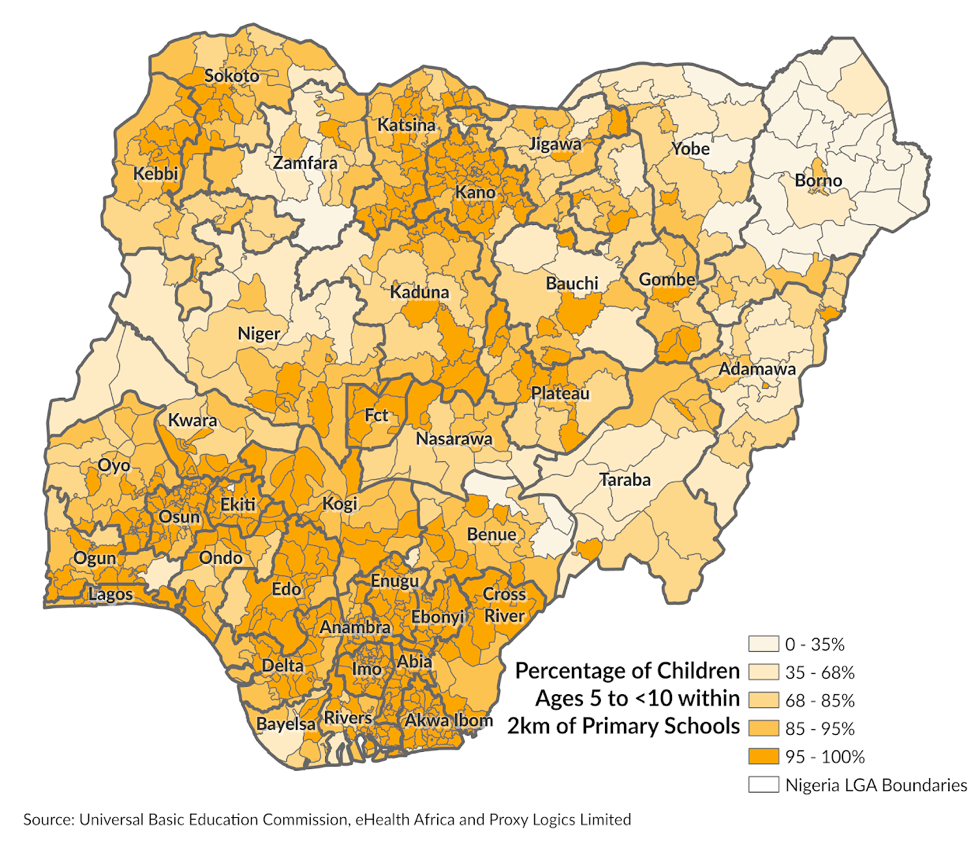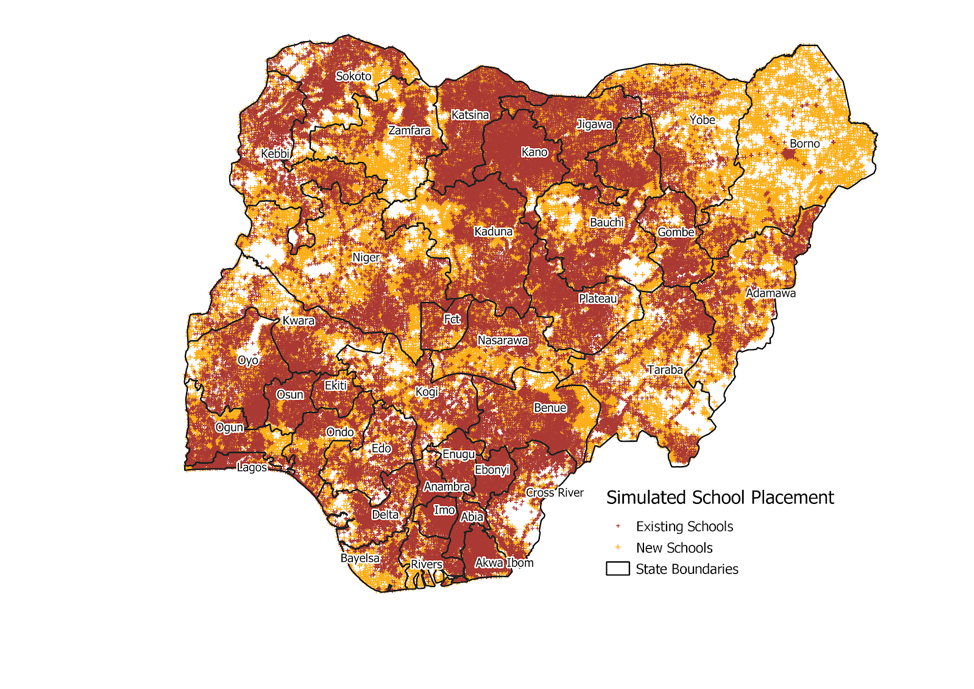Understanding access to education in Nigeria
Nigeria is characterised as having the world’s greatest out of school population, which is estimated to be 10.5 million. While this is due to a variety of socio-cultural and economic factors, the inaccessibility of educational facilities is often a key issue. Research has shown that the main contributing factors to primary school absenteeism in north west Nigeria include low levels of parental education, gender inequality, low incomes, perceived teacher performance, and prohibitive distances to schools. The effect of distance is further highlighted; living 20 or more minutes away from a school reduces the odds of attendance by 52%.
In an effort to improve education access, Nigeria’s Universal Basic Educational Commission (UBEC) established a range of policies to address school absenteeism, including one that mandates no student should have to travel more than 2 kilometres to the nearest school. To support UBEC, GRID3 Nigeria used geospatial data to analyse the location of current schools to Nigeria’s school-age population and recommend new school locations.
Examining access to education
In order to understand the current state of Nigeria’s education system, the GRID3 Nigeria team first analysed information from UBEC’s National Personnel Audit (NPA) dataset in relation to GRID3 population estimates. The team calculated the percentage of children within each local government area (LGA) that live within two kilometres of a school. Findings revealed percentages are lowest in the North East, particularly in Borno state. LGAs within many South South and South East states have rates as high as 95-100%.
Figure 1. Percentage of children, ages 5<10, within each LGA, that reside within 2km of a primary school. Data sources: GRID3, Universal Basic Education Commission, eHealth Africa, and Proxy Logics Limited.
In late 2019, these findings were presented to UBEC. The results were well-received and GRID3 Nigeria trained a small technical team, formed by UBEC, on geographic information systems (GIS). Through this training, the technical team were then able to perform these analyses independently.
Optimising school locations
Another component of the GRID3 Nigeria team’s approach was to determine the location where new schools should be built. GRID3 developed an optimisation model that simulates the placement of schools in locations that maximise coverage and student access. Based on Findings from the optimisation model demonstrate there are diminishing returns when more schools are built; but the impact of strategically building the first few hundred or thousand schools is significant.
Figure 2. Nigeria country map demonstrating existing school locations and proposed locations of new schools, according to GRID3’s school optimisation model. Data sources: GRID3, Universal Basic Education Commission, eHealth Africa, and Proxy Logics Limited.
Figure 3. Graph demonstrating the percentage of the school-age population within 2km of a school as a function of the number of newly constructed schools.
As a next step, simulation results will be presented to UBEC and select State Universal Basic Education Boards in March 2020. Feedback from the presentation will be used to customise the model to met the needs of national and state education agencies for eventual long-term adoption.



